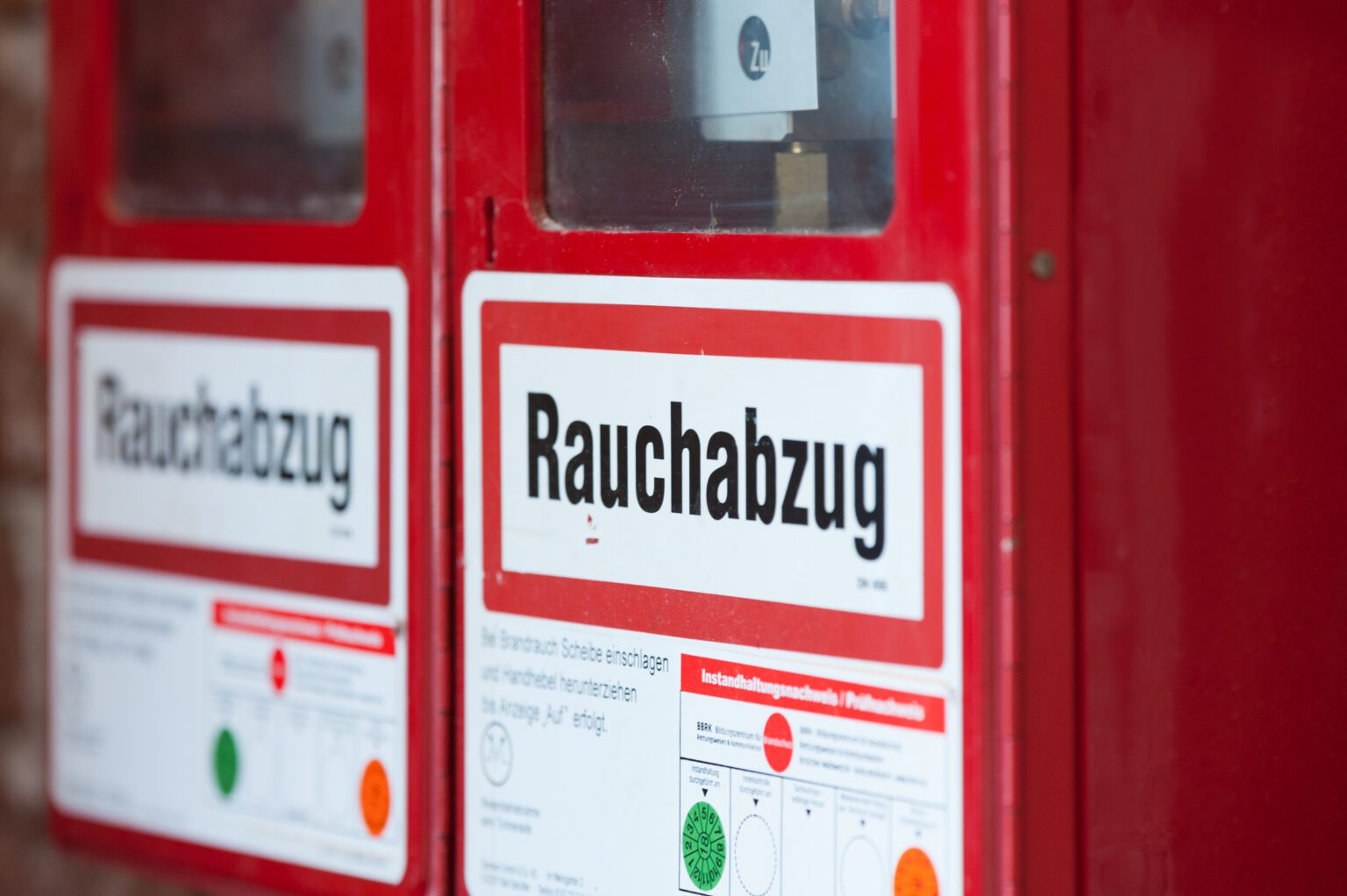SHEVS stands for smoke and heat extraction, which is an essential element of fire prevention. A fire produces heat, toxic smoke and hot combustion gases. SHEV systems channel these away from the inside of a building to the outside.
How do SHEV systems work?
Smoke and heat control systems are available in various designs. Mechanical and natural systems are the two main types. The systems we offer are natural smoke extraction systems (NRA). With this type of system, the smoke gases are extracted via roof or wall openings, for example by integrating them into the skylight dome or continuous rooflight systems. It must be possible to trigger the NRA both manually and automatically. To ensure smooth operation, the systems must be serviced regularly.
Are RWAs required by law?
Smoke and heat extraction systems (SHEVS) are prescribed by the building regulations of the federal states, fire protection concepts, insurance requirements and building permits.
SHEV systems are required in buildings that require a low-smoke layer in the event of a fire, such as industrial buildings with production halls or warehouses. They ensure that escape and rescue routes can be used for longer and that people can get outside. In addition, SHEV systems facilitate extinguishing and rescue work.
There are several factors to consider when selecting a SHEV system, such as the size of the roof, the windows and the façade, as well as the room height and the required low-smoke layers. Taking all these factors into account, Fritz Manke GmbH will help you find the right SHEV system for your requirements. With our expertise in smoke extraction systems, we ensure that the system you choose fulfils all requirements and offers optimum protection.
Installation, testing and maintenance of RWAs in Düsseldorf
Fritz Manke GmbH installs SHEV systems with customised exhaust air openings. We install the control unit, the drive, the opening units, the cabling and the safety power supply in your building. We also support you in combining the SHEV system with other fire protection equipment such as fire alarm or sprinkler systems. In this way, you can be sure that your building is optimally protected against fires.
We also coordinate regular maintenance and testing after successful installation to ensure that your SHEV systems comply with DIN 18232 and VdS/CEA guideline 4020.
To ensure that your SHEV system is up to date and compliant with the TPrüfVO, an inspection by a certified and recognised expert is required every 3-6 years - depending on the federal state. We take care of testing the triggers, controls, openings, power supply lines and accessories of your SHEV system so that you can be sure that it is in perfect condition.
As a certified company in accordance with DIN EN ISO 9001:2015, Fritz Manke GmbH is a recognised installer of fire alarm systems and smoke and heat extraction systems. This means we can offer you a competent and efficient service right from the start.
